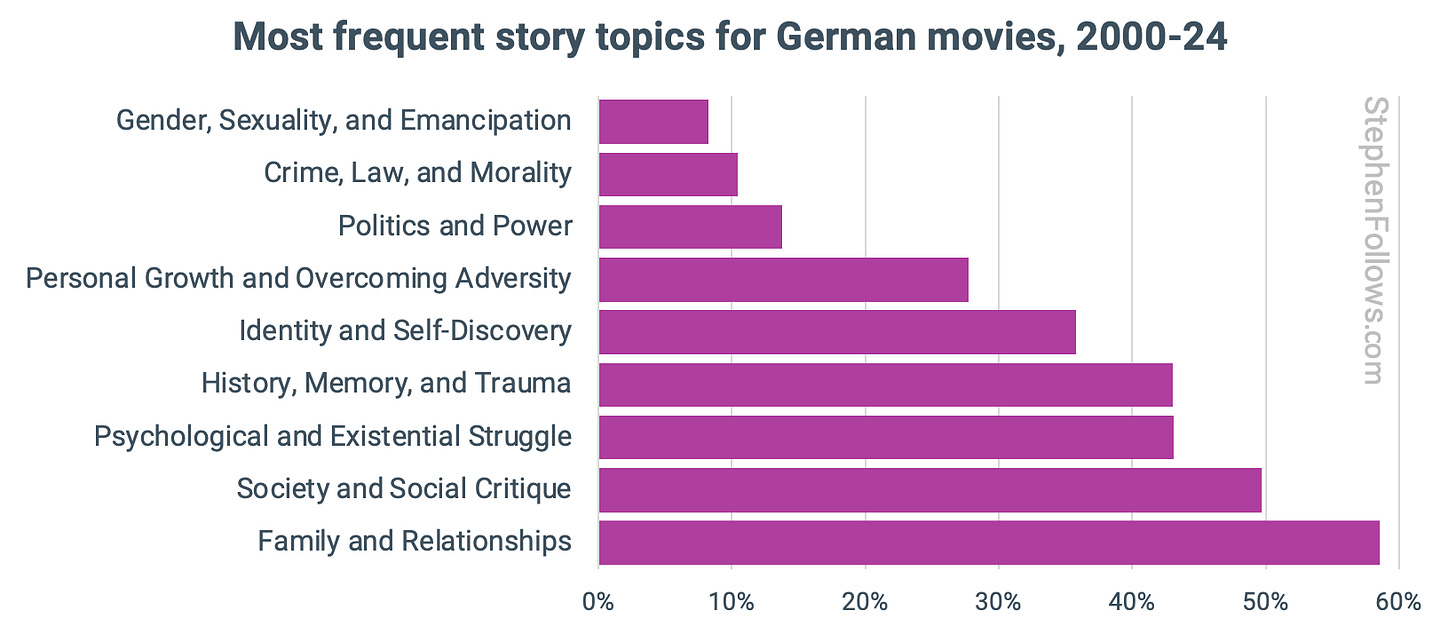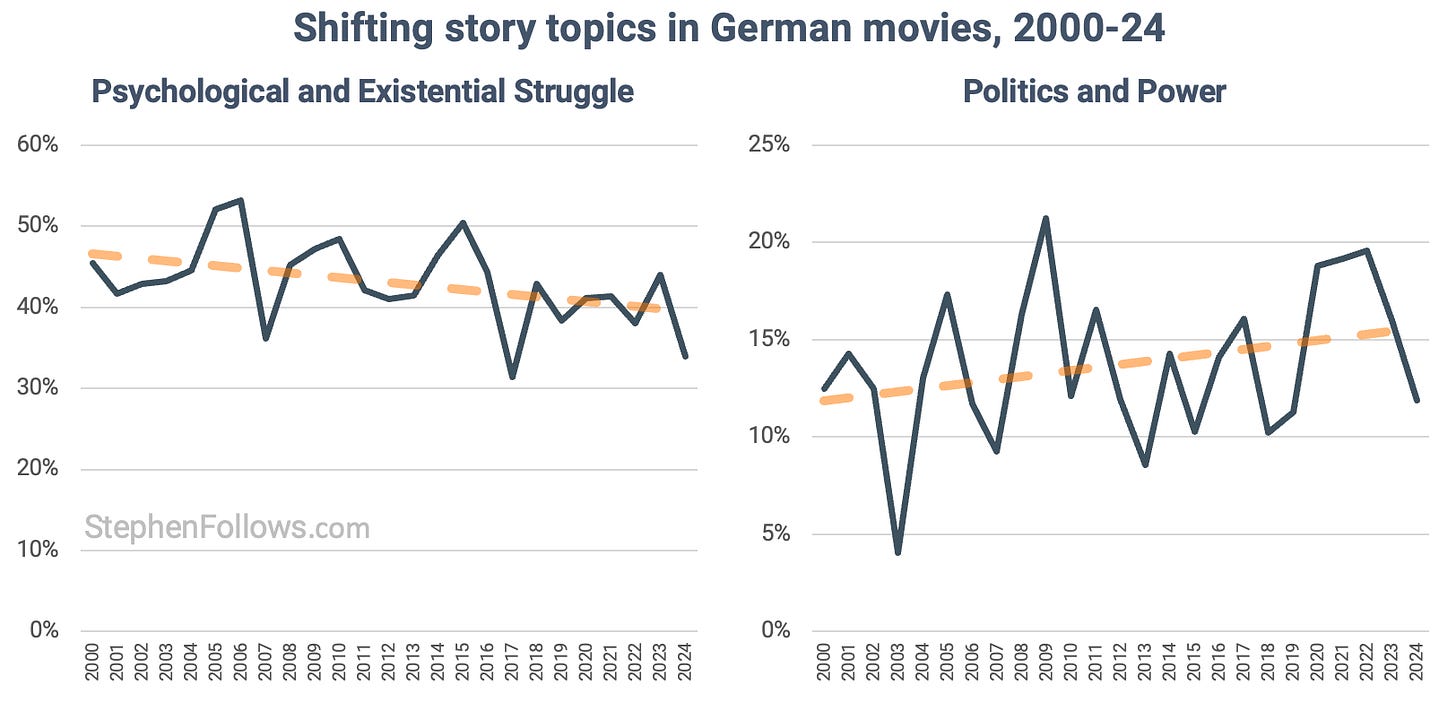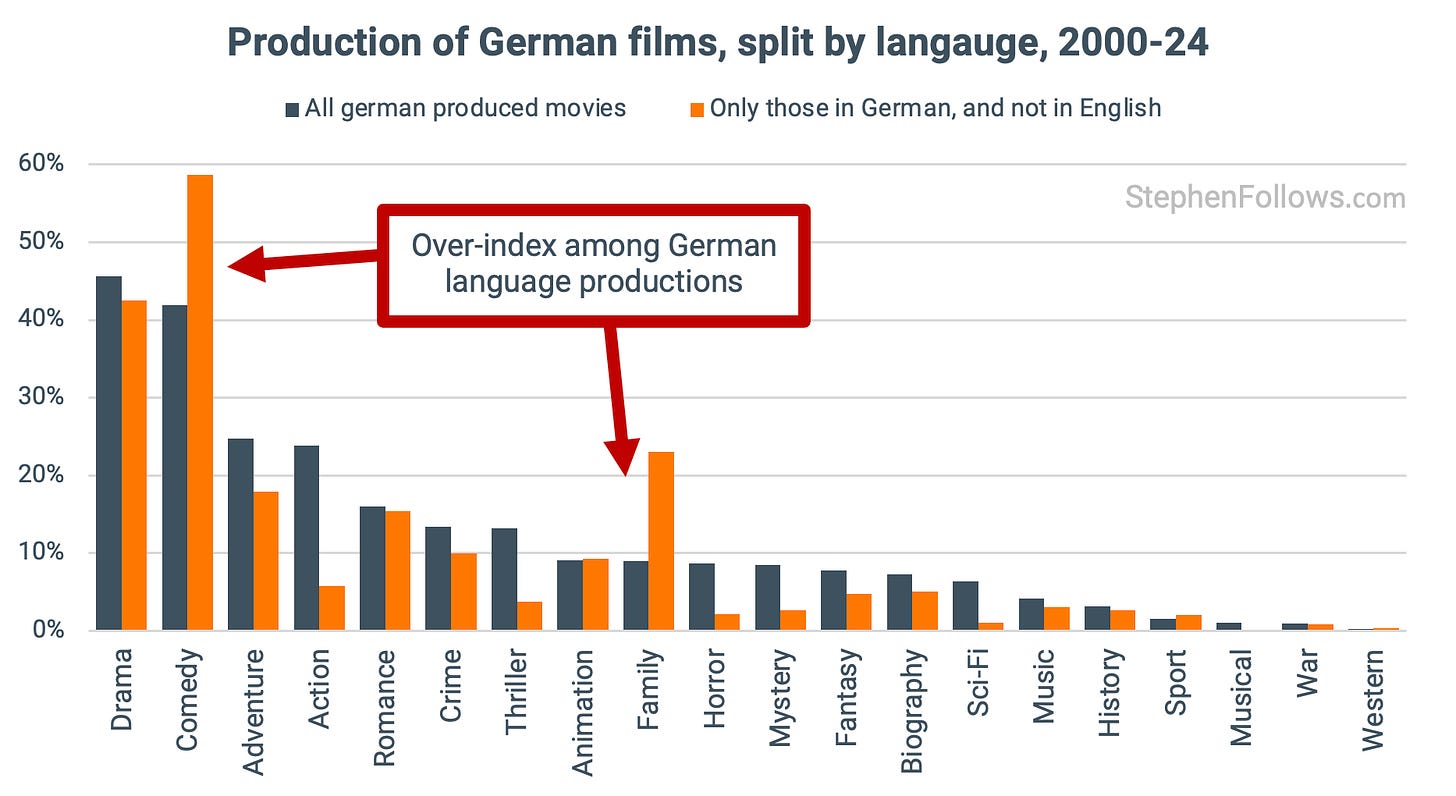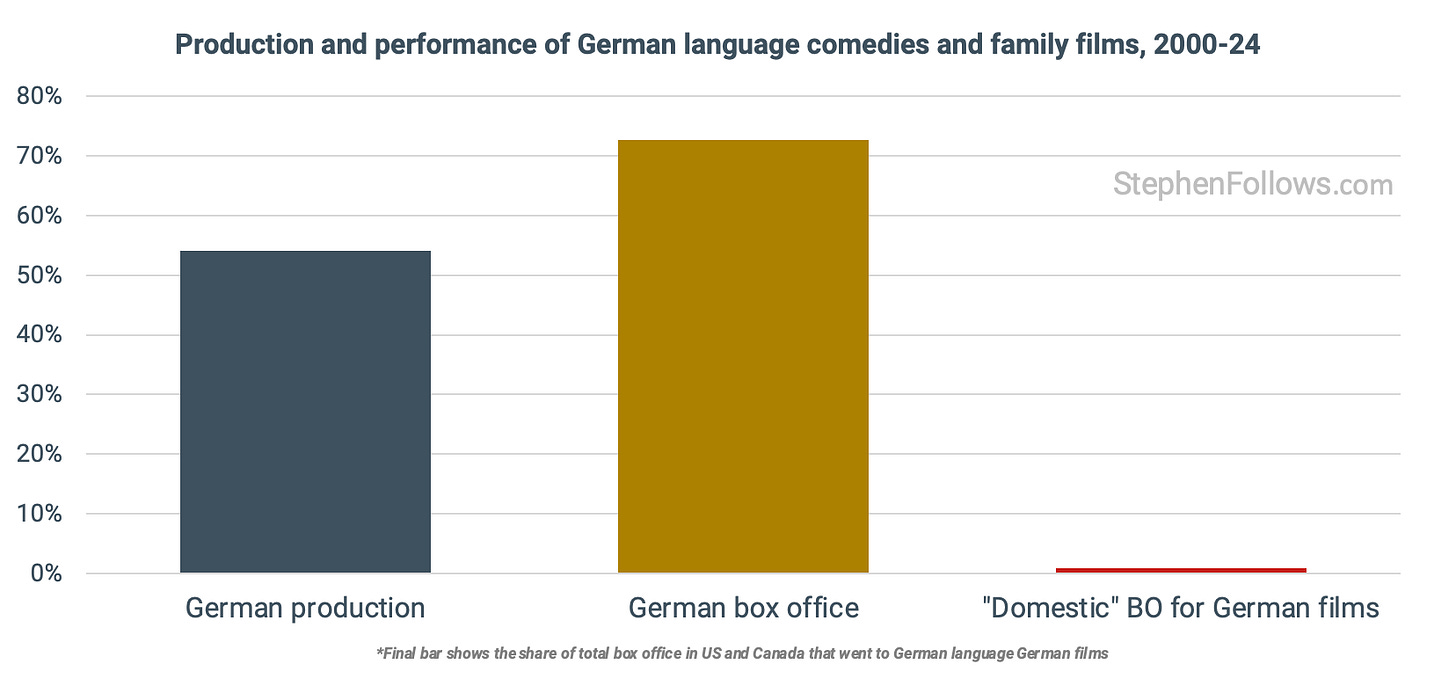Why German films look so different at home and abroad
German audiences pack cinemas for feel-good comedies and family films while the rest of the world associates German cinema with brooding dramas and historical weight.
Last Friday I was in Munich to speak at the Creators Conference of the German Producer Alliance as part of the Munich Film Festival. It was a really fun project as the event’s curator, Erwin M. Schmidt, gave me complete freedom to study any aspect of the German film industry I liked. He said:
Dig through the data and tell us what’s most interesting about the German film industry.
So I spent a few months exploring all aspects and ended up with five different insights, one of which I’m going to share today.
Namely, that German cinema has two distinct identities depending on who is watching.
Inside Germany, the box office is dominated by light-hearted comedies and family films. These films are popular and profitable in Germany but barely seen beyond German-speaking countries.
Outside Germany, the story looks very different. The films that succeed internationally are typically serious dramas centring on deep moral conflict, psychological tension or historical themes. They still do well within Germany but account for a much smaller share of domestic box office.
It’s a great example of how national cinema can be shaped by different expectations in different markets. What Germans see as representative of their culture is not always what the world recognises as German film.
Let’s dig into this….
The types of topics German filmmaker tackle
To understand why German cinema looks so different at home and abroad, it helps to start with the stories themselves. Over the past three decades, certain themes have consistently dominated German feature films.
The most common theme, by some margin, is family and relationships, present in nearly 60% of German films. Close behind are stories focused on society and social critique, psychological struggle, history and trauma, and personal identity.
Things are shifting slowly over time, with more films tackling external power over internal struggles.
So across the sector, we are dealing with a storytelling tradition rooted in the personal and the reflective. German cinema tends to ask questions about how people live, how society functions, and how individuals confront the weight of their past and present.
But the way these themes are expressed differs significantly depending on the intended audience.
German language films in Germany
In order to highlight the divide we’re going to focus in on movies made in Germany, which are in the German language, and also not in English.
Even before we get to what audiences think, we can see that German filmmakers in this category are much more likely to make comedies and/or family films.
The chart below shows the genre of German movies, split by language. Comedies and family films over-index among the German language production.
And this local appreciation for lighter fare is matched at the German box office, accounting for almost three-quarters of admissions since 2000.
A few examples include:
Chantal im Märchenland (2024): A fantasy-comedy that led the German box office for several weeks in March and April 2024..
Die drei ??? – Erbe des Drachen (2023): Based on the popular youth detective series, this family adventure film sold over 1.5 million tickets.
Rehragout-Rendezvous (2023): Part of a Bavarian crime-comedy series, this film attracted over 1.5 million admissions.
Manta, Manta – Zwoter Teil (2023): A sequel to the 1991 cult classic, this action-comedy directed by Til Schweiger attracted over 1 million viewers within its first three weeks, making it one of the most successful German films of the year, despite some pretty harsh audience feedback.
Wochenendrebellen (2023): A heartwarming comedy-drama about a father and his autistic son embarking on a journey to find the son's favourite football team, grossing over $8 million domestically.
But when we look at how these same films perform across the Atlantic, it’s negligible.
Less than 1% of all the money grossed by German language German movies in the North America goes to comedies or family films.
I’ll repeat that for emphasis - in Germany they take 73% of the box office share and in the US and Canada it’s 0.9%.
So what are North Americans watching from Germany?
The types of German language movies that travel
When German films succeed internationally, they look very different from the ones that dominate the local box office.








